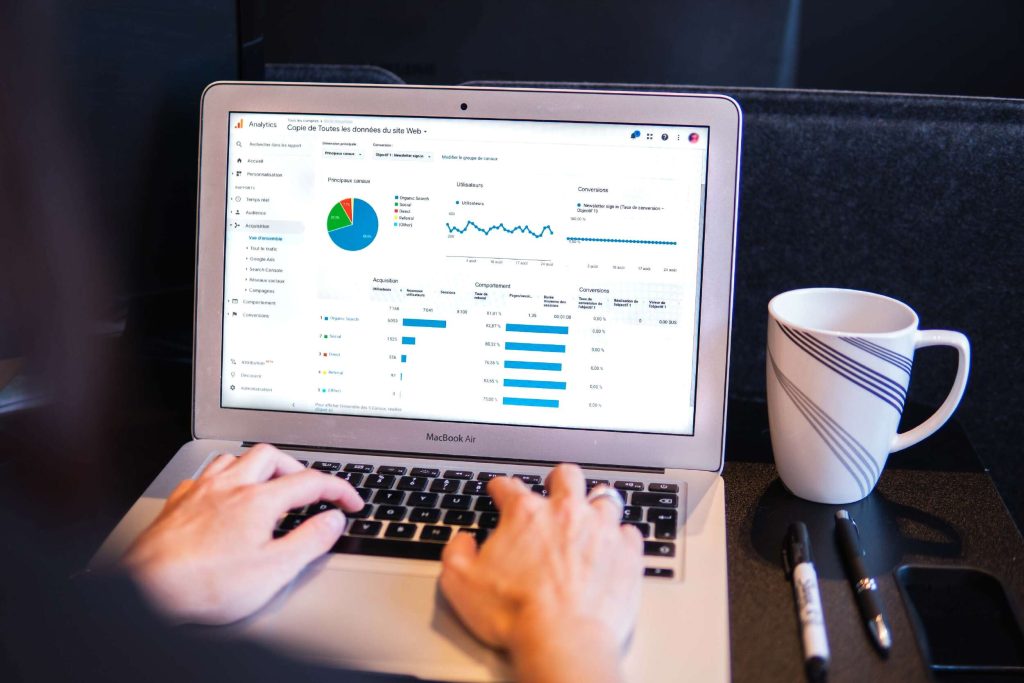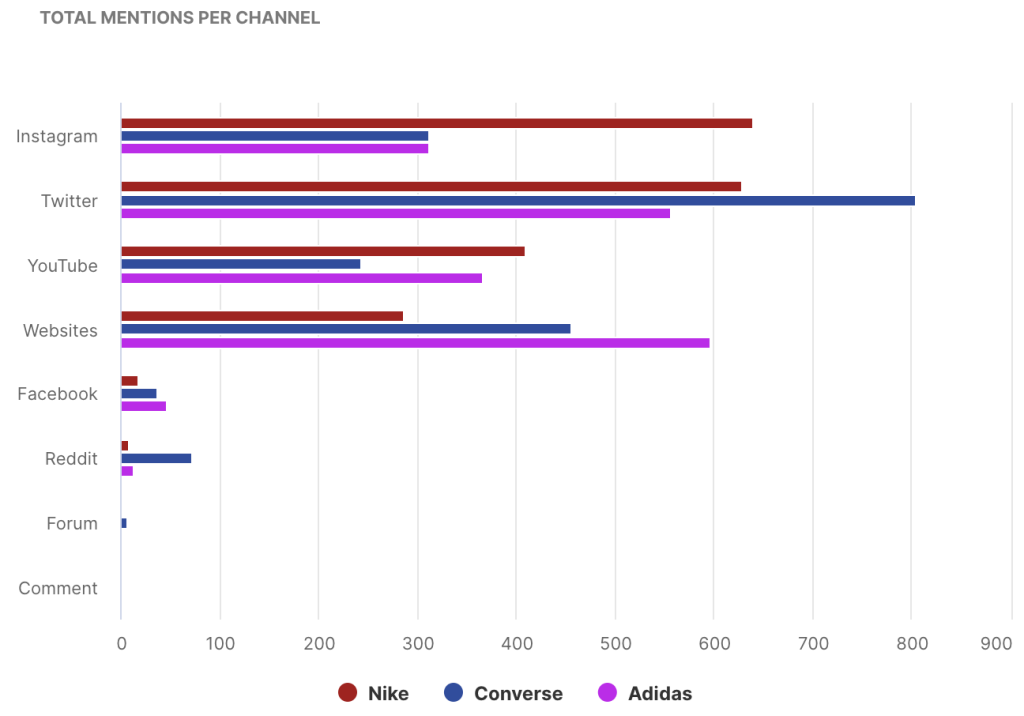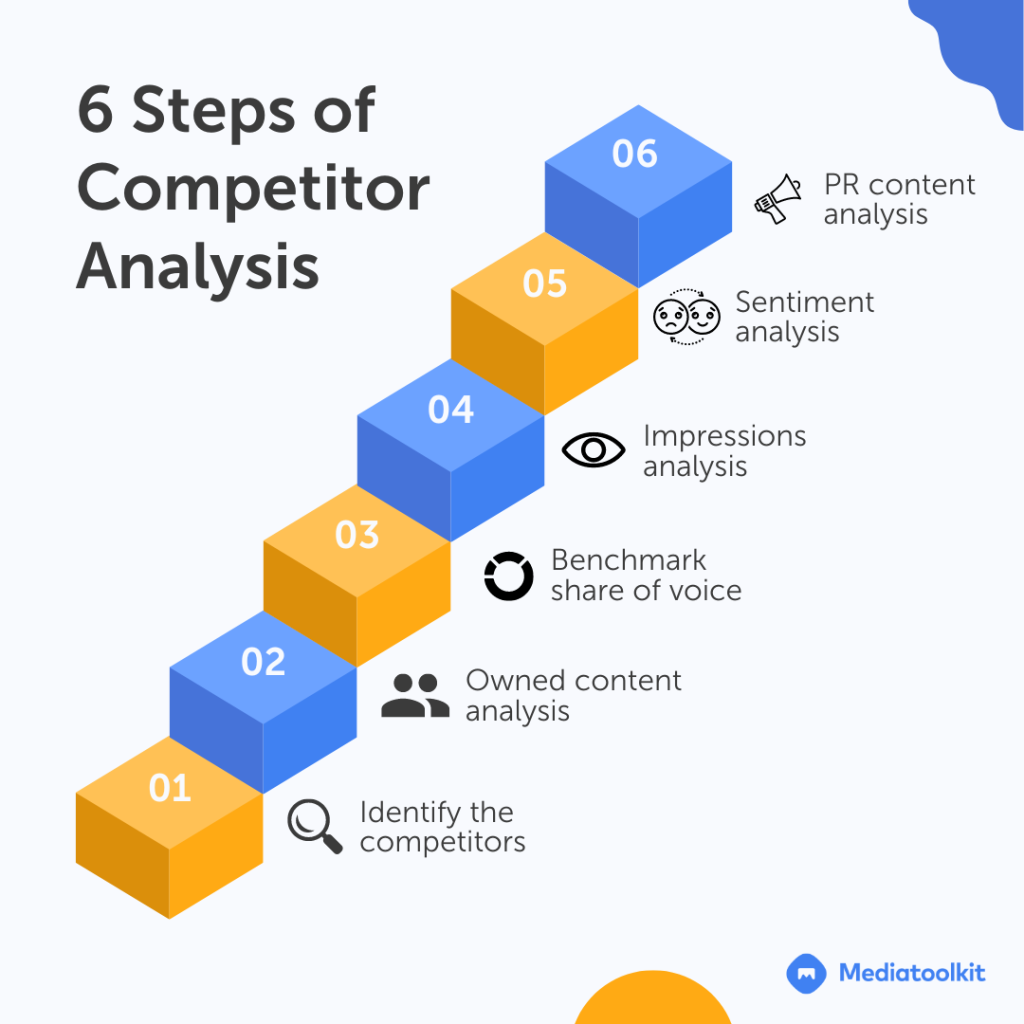Risks and opportunities abound in the business world. For example, an industry trend may sweep the market for a limited time and favor early adopters, whereas a failed competitor can be a good source of new customers.
These kinds of news are hard to come by, and by the time you buy expensive analyst reports, they’re already out of date. So, how do you ensure that you understand your competitive benchmarking and stay ahead of the market research process proactively and cost-effectively?
? Read: Competitive Analysis: All You Need to Know
Business competitive intelligence is the key to ensuring that your saas application development is not caught off guard. Notably, data collection is not the only goal. Instead, it empowers the entire team to win by implementing a scalable and repeatable process.
So, what exactly is competitive intelligence, and how does it differ from companies outright spying on each other? And how can your company use this data to gain insights that will give you a competitive advantage?
There’s no need to be concerned. When gathered within acceptable bounds, competitive intelligence is not only perfectly legal; it can also be a massive boost to the decision-making capabilities of several departments within your company. In the following sections, we’ll review the fundamentals of what you need to know.
What is Competitive Intelligence?
Competitive intelligence is the collection and analysis of publicly available data on competitors by a company, which is then used to develop business strategies that outperform them.
Competitive intelligence is data that includes analysis, information, or insights about a company’s competitors. A competitive intelligence study’s canvas has data points such as a competitor’s brand, movements, strategy, etc.
Business competitive intelligence is a strategic approach to designing future business moves that takes advantage of information from a company’s market and competitors. To gain a competitive advantage, all teams in your organization require specific and actionable intelligence relevant to their job function.
For example, if you know that a significant competitor is pursuing an acquisition strategy, you may decide to compete on quality and customer service rather than size. Alternatively, if a competitor begins to purchase raw materials from another country, you could emphasize using “locally-sourced” materials as a subject for your next advertising campaign.

Why do you need competitive intelligence?
So, what exactly are the objectives of competitive intelligence? Why should you be concerned with what your competitors are doing instead of focusing on your own? As it turns out, your adversaries can be some of your best teachers. It is because they all want to do the same thing as your company, but better in one or more ways.
Advantages of Competitive Intelligence
More innovative sales tactics
If your sales team understands how your company’s products and services compare to competitors, they will be better prepared to address prospective clients’ concerns and steer talks to focus on your company’s strengths.
Read Meeting Customer Needs: 7 Ways to Get to Know Your Customers Better
Personalized campaign marketing
Your competitors are competitors because they are attempting to sell similar items and services to similar clients. Understanding how they succeed or fail to reach consumers might provide you with ideas for positioning your marketing to reach specific audiences.
Better product development
Understanding a competitor’s product’s packaging and pricing (for example) might assist your teams in producing items for your company from a better starting point.

Risk reduction
Why commit the same error that a rival previously made? You can reduce the likelihood that you’ll implement something that either doesn’t work or that your competitors have improved upon by looking at what worked and what didn’t from things your competitors have already attempted.
Read Competitive Monitoring: 8 Tips to Stay Ahead of Your Competition
Where to Gather Competitive Intelligence
Content
Your competitors’ content is a goldmine of information about what customers want and how they want to establish thought leadership.
Keep an eye out for these:
- Content and format types
- Frequency of posting
- Keywords and SEO
- Overall CTAs
For instance, releasing four case studies in succession is a blatant sign that they are focused on pursuing a particular customer profile. The publishing frequency can also be a benchmark for developing a solid content strategy.
Read How can Determ Help you Create Relevant Content
Your competitor’s website
It should not be surprising that visiting your rival’s website is an excellent place to start when trying to obtain competitive intelligence. It’s typical to gather information about competitors by going to their websites. You can discover hints about the target groups they’re aiming for, their marketing positioning, the goods they’re offering, the price points, and other improvements to their operations.
Keep an eye out for these:
- Message and positioning adjustments.
- Both vertical pages and solutions.
- Pricing.
- Product alterations
Examine the homepage and any pages that pertain to marketing first. Has their tagline been altered? What client logos are featured there? What types of buyers are they aiming for? These signals will let you know how your rival wants to be viewed by clients and which industries they are focusing on.
Second, proceed to the pages relevant to the products, especially the pricing page. Don’t, however, accept the cost. Look farther. Ask about the trial period’s duration, the pricing structure, the onboarding expenses, etc.
The FAQ of your rival can also be a valuable source of information for marketers who can develop marketing materials targeted at alleviating challenging problems.
Read A Step-By-Step Tutorial for Writing a Competitor Analysis Report for Your Company

HR
The best indicator of a competitor’s growth is its workforce, possibly the most underutilized CI resource.
Keep an eye out for these:
- Careers/About Us pages.
- Departmental job positions.
- C-level personnel.
- Interviews, salary, and cultural feedback (Glassdoor).
No one is more knowledgeable about the advantages and disadvantages of your rival than their personnel. Even if they may be loyal, the employees are nevertheless talking among themselves and leaving traces that could be used as competitive advantages.
What is the culture of the competitors? What happens throughout the interviewing process? Typical salaries? These kinds of inquiries might help your HR department identify shortcomings in candidates who are similar to you and correct them.
Your competitors’ careers or about us pages are excellent additional resources for competitive intelligence. The general idea is to look past the specifics of the job description, such as the location, role, and prerequisites.
Long-term job vacancies typically indicate that the competitor is extremely busy and needs a high-level specialist to handle the workload.
Customer reviews
It’s time to discuss the most accessible internal intelligence sources with your clients and coworkers.
Your clients had to go through several hoops to test other competitors before choosing you. They will therefore be aware of the issues your competitors are attempting to address and what strategies work and don’t in their industry, saving you valuable time on competitive intelligence research.
Obtaining this data directly from clients through surveys or interviews is one method of gathering it. The other is to get in touch with your coworkers.
Keep an eye out for these:
- Compare your items’ customer satisfaction to those of your competitors.
- Based on your key success characteristics, create scorecards for your clients.
- Why might customers choose to purchase from your competitors instead of you?
- When interacting with your consumers, take note of any remarks—positive or negative—that they make about rivals.
- If your clients are major corporations, connect with them on social media, follow them, sign up for their newsletters, and add your name to their mailing lists.
Read 10 steps to manage negative online reviews

Press
Examining a company’s news, events, and press releases is a simple approach to performing competitive intelligence research.
Pay attention to news sources, particularly those that focus on business news. They frequently include competition announcements about their initiatives, such as new items they’re releasing, new employees they’ve hired, or other expansion efforts. Competitors might even display these updates in a “News” or “Press” section of their websites.
The news section of a firm can quickly reveal its general orientation, including if it has acquired a market leader, plans to enter new markets, or has obtained new investments. Some even have publicly available financial data that can give you the advantage of responding proactively to market movements.
One element of the puzzle is the news page. You can look at publishers who already write about your competitors but not your industry. Establish connections with them. Who knows, though? You might have access to a larger platform to promote your product.
Keep an eye out for these:
- Press statements.
- Events.
- Reports on financial results.
How to Build a Competitive Intelligence Program
Scalability is essential in a competitive intelligence program so that employees can access the correct information and procedures for their position.
We’re not just referring to C-level executives here; we’re also referring to sales representatives, marketers, and engineers who can use these data to handle objections better, connect with new audiences, and plan product launches.
The good news is that given how simple it is to acquire information online, CI initiatives are now more economical than ever—even for SMBs with small budgets. Without further ado, the following are the crucial steps in creating a successful CI program:
1. Identify your direct competitors
For your competitive intelligence, start by conducting some fundamental market research. Understanding the actions and choices of rivals in your industry is the primary goal of competitive monitoring.
It is designed to monitor how other companies in your sector or landscape compete with you regarding product development, service sales, marketing, closing agreements, and other factors. It also allows you to compare your goods and services to those of your rivals.
Every team must be aware of and keep tabs on what the opposition is doing in their corresponding department and how it affects their operations, the market, customers, etc.
For marketing and sales teams, competition intelligence can be beneficial in understanding how rivals sell their goods and services and close transactions with potential customers.
As competition becomes more challenging, competitor intelligence becomes necessary. The sales, marketing, product, and other divisions of your company can work together to counteract the techniques of your rivals and eventually increase income for the company by having a thorough understanding of how your competitors are winning deals in your industry.
Understanding your position in the market, attracting new clients, and retaining existing ones can drive your company to competitive monitoring.

2. Establish critical objectives and metrics for each stakeholder
It’s time to define your main goals and measurements now that you have identified your primary competitors. It goes hand in hand with figuring out which stakeholders the CI program has to win over.
Asking the C-level executives what competitive risks keep them up at night is an excellent place to start. Although it won’t prove that a CI program is necessary, this action will help you find the departments that can address the issues.
Keep in mind that each function provides a point of contact between your company and the customer, offering several viewpoints of the purchasing process.
Let’s examine the typical CI stakeholders and illustration a goal for each:
- Sales: Boosting victory rates in challenging deals.
- Marketing: Produce combat cards that can be used.
- Engineers: Create genuine differentiators.
- Retain customers: Customer success and support.
- C-level executives: Research potential entry points into nearby EMEA markets.
Now, this does not imply that objectives do not overlap. But on the other hand, better positioning can generate more leads, and a unique offering can considerably boost client retention.
The key takeaways at this stage are finding out the job functions contributing to the CI program and efficient ways to measure it.

3. Gather data
It would help if you went to find the facts on your rivals after deciding what you want to know. Although marketing competitive intelligence materials and financial data are captivating places to start, there are many more data sources you can check as well. Unfortunately, resources for competitive intelligence analysis have already been exhausted. However, be aware that you can divide them into two data kinds on a meta-level.
There are external data. The material is easy to find online and is already on your rival’s website, social media, review sites, analyst reports, etc. Resellers are a reliable source of information about the advantages and disadvantages of your competitor’s primary offering while being more difficult to find.
Additionally, we have internal data. It’s information already in your company, such as call notes from a sales representative or a pricing list from a rival company that was forwarded to one of your clients.
Read What Is Competitor Mapping and How to Use It for Your PR Campaigns
4. Analyze data
It’s time to start analyzing when you believe you have gathered enough data on your rivals to make some inferences. Creating a competitive intelligence model is one thing that can be beneficial in this situation (or two, three, or more). It enables you to group the data you’ve discovered according to the most important criteria for your company.
Analyzing your results enables you to identify patterns in cause-and-effect relationships. It, in turn, can improve your performance by allowing you to identify strategic market gaps that you might be able to fill.
A CI program must make strategic decisions based on accurate data to succeed. Take note of your competitors’ yearly or quarterly reports, for instance. Then change your plan of action accordingly. It might assist you in making some vital marketing decisions.
There is no magic formula for creating a combat card, but an effective one needs to have the following sections:
- Profile of one of your competitors.
- Quick dismissals to eliminate the competitor right away.
- Arguments for why you succeed and fail.
- Response handling for objections.
- A list of potential conversation-killers that negatively portray your rival.

5. Share insights with key stakeholders
It is useless if competitive information remains hidden and has no effect on stakeholders. Therefore, your tasks at the program’s conclusion are twofold:
- Determine the preferred methods of communication for your stakeholders.
- Up the frequency at which competitive insights are delivered.
Ask your stakeholders how they communicate for the first project. For example, sales representatives might hang out in Slack, but CEOs often use email. To ensure that knowledge is quickly absorbed, always meet them where they are comfortable.
Regarding the second, consider discussing industry insights throughout daily and weekly stand-ups. For example, according to a survey, businesses that routinely express competitive intent have reported a direct revenue benefit; 69% of respondents shared such an aim daily, and 72% shared it weekly.
Ultimately, a CI program’s adoption and success will be ensured by the continual practice of exchanging competitive insights.
Conclusion
The long-awaited solution to traverse the commercial environment is competitive intelligence. But please don’t consider it a one-time event. Instead, think of it as a continual process that gives each team member information about their position and the tools they needs to make better business decisions.
We hope that this tutorial has shown you the value of competitive intelligence analysis for your company’s strategic decision-making and how to obtain the necessary data.
Sophia Diachenko is a PR manager at Syndicode company. This is a digital transformation & products delivery company engaged in marketplace creation, SaaS development services, and web application development. In her free time, Sofia enjoys broadening her knowledge in the IT sphere. She knows a lot not only in the field of IT but also in the field of SEO, so she is happy to share her knowledge and experience.



